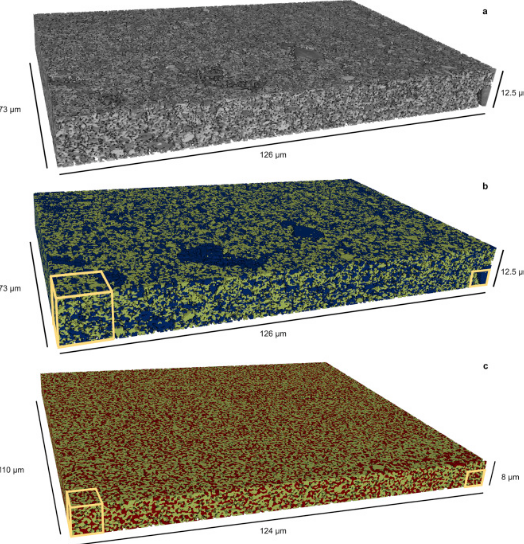Thermo Fisher Scientific › Electron Microscopy › Electron Microscopes › 3D Visualization, Analysis and EM Software › Use Case Gallery

The performance of electrochemical devices depends on the three-dimensional (3D) distributions of microstructural features in their electrodes. Several mature methods exist to characterize 3D microstructures over the microscale (tens of microns), which are useful in understanding homogeneous electrodes. However, methods that capture mesoscale (hundreds of microns) volumes at appropriate resolution (tens of nm) are lacking, though they are needed to understand more common, less ideal electrodes. Using serial sectioning with a Xe plasma focused ion beam combined with scanning electron microscopy (Xe PFIB-SEM), two commercial solid oxide fuel cell (SOFC) electrodes are reconstructed over volumes of 126 × 73 × 12.5 and 124 × 110 × 8 μm3 with a resolution on the order of ≈ 503 nm3. The mesoscale distributions of microscale structural features are quantified and both microscale and mesoscale inhomogeneities are found. We analyze the origin of inhomogeneity over different length scales by comparing experimental and synthetic microstructures, generated with different particle size distributions, with such synthetic microstructures capturing well the high-frequency heterogeneity. Effective medium theory models indicate that significant mesoscale variations in local electrochemical activity are expected throughout such electrodes. These methods offer improved understanding of the performance of complex electrodes in energy conversion devices.
For Research Use Only. Not for use in diagnostic procedures.